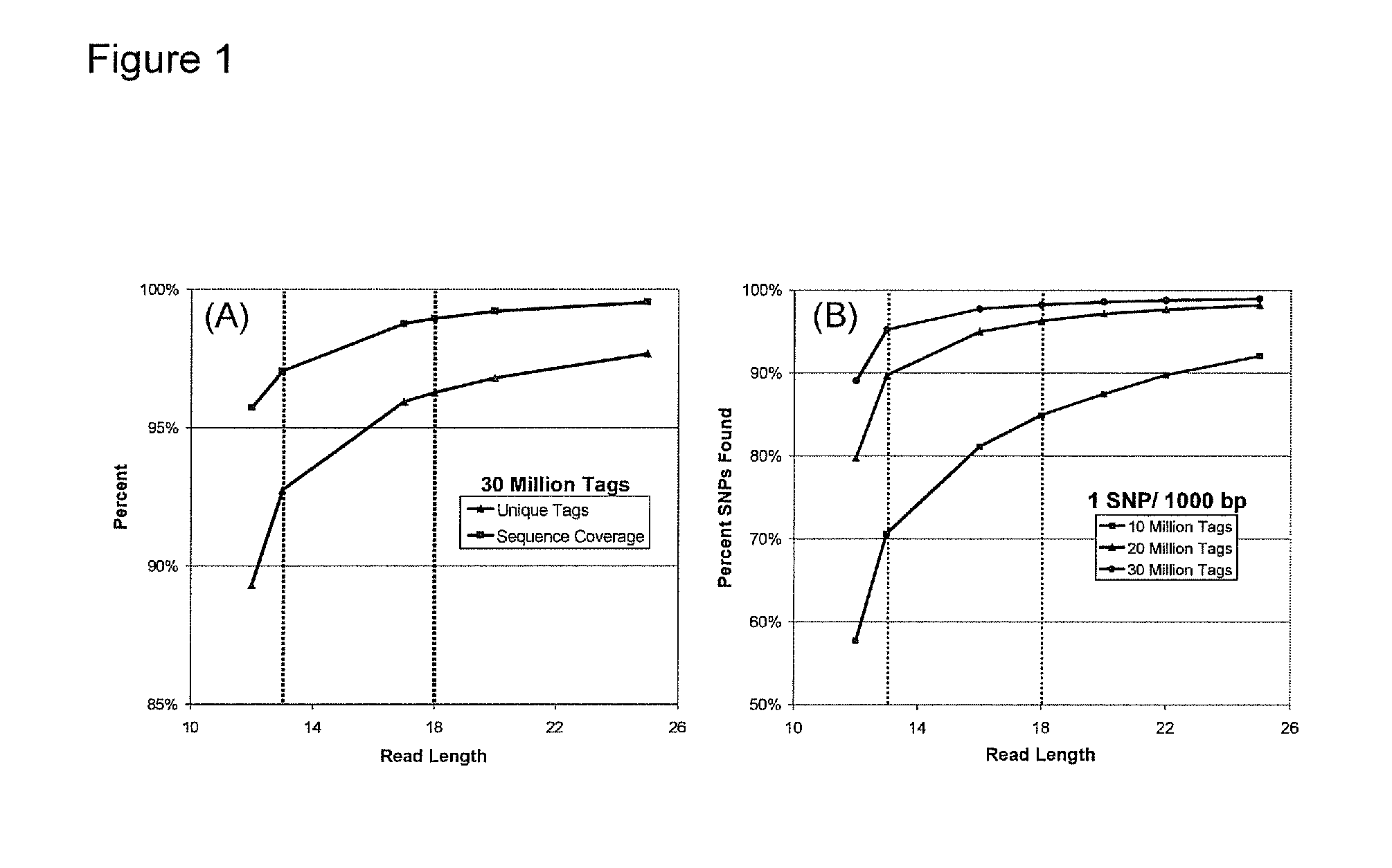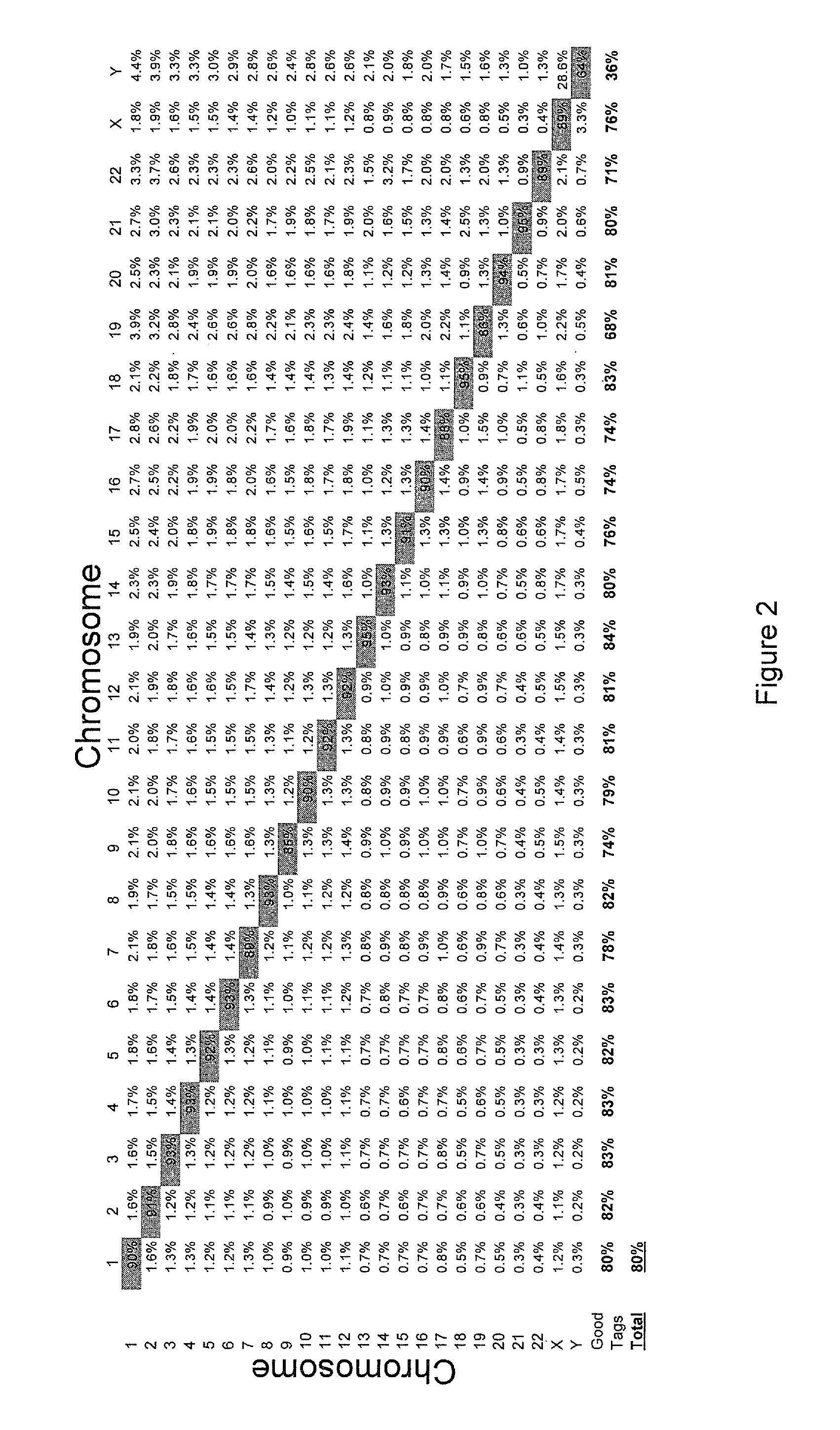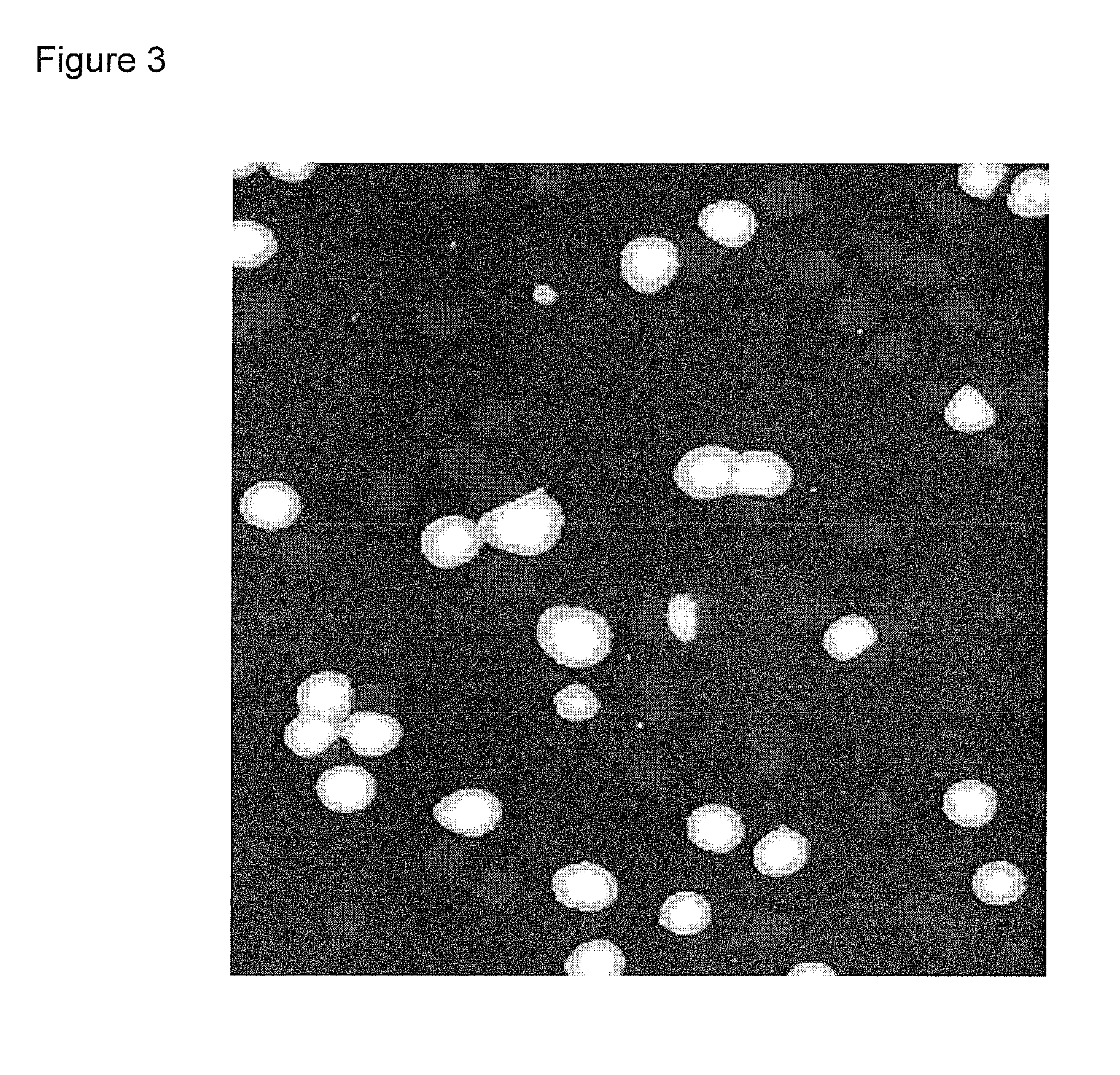Polony sequencing methods
a polygony sequencing and read length technology, applied in the field of polygony sequencing methods, can solve the problems of increasing the error rate of “+” direction sequencing, the inability to hybridize an anchor primer or perform sbl, etc., to achieve the effect of improving the library construction and emulsion protocol, increasing the read length of polony sequencing, and ultra-high throughpu
- Summary
- Abstract
- Description
- Claims
- Application Information
AI Technical Summary
Benefits of technology
Problems solved by technology
Method used
Image
Examples
example 1
[0143]We can currently sequence 26 to 30 total bases per bead in a polony sequencing run (only up to 8 continuous bases). Increasing the read length has proven difficult. We have been able to extend our reads in proof-of-concept experiments and we are now implementing these in the Polonator G.007 flow cell (Dover Systems, Salem, N.H.). Our goal in this Aim is to extend the reads to obtain 36 bases of continuous sequence. This will allow us to sequence 72 bases per bead from a fragment library (described in Example 2).
Increasing the Read Length Using Cyclic Ligations
[0144]The Endonuclease V cleavage of deoxyinosine in the nonamer is now working very well and we have sequenced 18 continuous bases on beads in suspension. We anticipate being able to extend the reads to 36 continuous bases or more.
Optimizing Ligation Efficiency
[0145]The Endo V cleavage is extremely efficient, we can no longer detect signal from beads that were previously saturated after 10 minutes digestion with a very d...
example 2
[0151]The first step in preparing a library is typically size selection, and this could ultimately be performed by HPLC, or even eliminated by starting with a more uniformly sheared DNA sample. A single gel could be run to verify the size for data analysis at the end. One can uniformly shear DNA with a nebulizer generating a narrow size range of approximately 700-1300 bp.
[0152]We have developed a bead based strategy for purifying the restriction digestion product fragment that eliminates the need for PAGE purification, illustrated in FIG. 13.
[0153]Following the bead-based purification, the fragments are affixed toe the beads and available for ligation of end adaptors. Having the fragment on beads simplifies all following steps since the beads can be moved from step to step by thoroughly washing the beads.
[0154]The final library is obtained and bead bound. At this point the library has undergone zero amplification. One can amplify the library directly off the beads using PCR to gener...
example 3
Bead Enrichment
[0160]Bead enrichment may be accomplished by modifying standard methods as follows. The beads can be treated with exonuclease I after ePCR and before enrichment. The exonuclease I treatment can eliminate unextended primers and, therefore, can reduce non-specific interactions that can interfere with the enrichment. Also, TE buffer with 0.1% triton-X and 50 mM NaCl can provide for more stringent hybridization between beads with DNA and enrichment beads. For the DPePCR and QPePCR we will follow a different enrichment strategy that we anticipate will effectively enrich for DNA coated beads. The approach is illustrated in FIG. 19.
PUM
| Property | Measurement | Unit |
|---|---|---|
| diameter | aaaaa | aaaaa |
| diameter | aaaaa | aaaaa |
| diameter | aaaaa | aaaaa |
Abstract
Description
Claims
Application Information
 Login to View More
Login to View More - R&D
- Intellectual Property
- Life Sciences
- Materials
- Tech Scout
- Unparalleled Data Quality
- Higher Quality Content
- 60% Fewer Hallucinations
Browse by: Latest US Patents, China's latest patents, Technical Efficacy Thesaurus, Application Domain, Technology Topic, Popular Technical Reports.
© 2025 PatSnap. All rights reserved.Legal|Privacy policy|Modern Slavery Act Transparency Statement|Sitemap|About US| Contact US: help@patsnap.com



